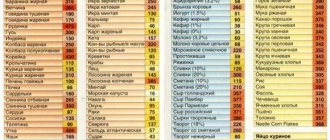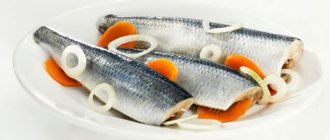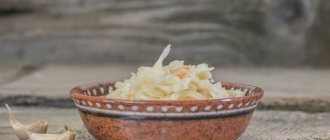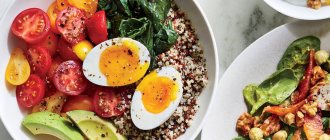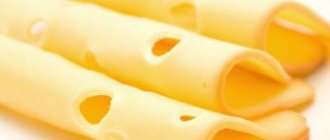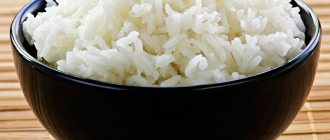The only way to get rid of excess fat deposits permanently is to wisely reduce the calorie content of food within your calorie range. Competently means mathematically accurately calculating the minimum and maximum daily caloric intake you need.
Neither sport itself, nor the thoughtless use of the strictest diets will give a reliable result if you do not know absolutely exactly how many calories per day the body must receive in order for it to get rid of excess fat.
There is no need to worry about the complexity of such calculations. The process is a bit like a game, the rules of which gradually become clear and even interesting. In addition, in literally 2-3 days you will learn to determine the calorie content of dishes almost by eye.
The benefits of working with numbers will be enormous. Firstly, the process of losing weight will occur quickly and continuously. And secondly, the realization that the calorie content of one small cookie is equivalent to 100 additional squats will be an excellent moral incentive to easily give up excess food.
How to do it?
So, if you are determined to lose weight by controlling the calories in your diet. To do this, you need to learn how to accurately calculate them. You need to understand what your diet consists of and how to translate a delicious lunch into its numerical expression. In this newsletter, you will learn how to accurately calculate your calorie intake and use it to keep your personal “calorie diary.”
Calorie tracking can be useful not only for people who are losing weight, but also for those who play sports or fitness for better control over their body. And also for any health problems that require you to strictly monitor your diet.
But before you start limiting your diet, remember that in this, as in any other health-related matter, you need to be extremely careful and take moderation. And it is best to first consult a doctor, a nutritionist.
Photo: Depositphotos
Calorie counting apps
Well, of course, we can’t help but remember mobile apps that can quickly help you solve the problem of how to count calories.
First, I would like to highlight the Calorie Counter program from the developer MyFitnessPal . First of all, it is distinguished by a huge product base - there are about 6 million items. It is also worth highlighting the convenience: you can enter data either on a computer through your personal account, or using a smartphone. Synchronization occurs in real time. If you are bored of losing weight on your own, you can connect your friends, “Calorie Counter” allows you to do this. The user also has the opportunity to track his physical activity, study various graphs and positive or negative changes.
The second recommended app is Dine4Fit Calorie Counter . The functionality is not as wide as in the program presented above, but it copes with its direct task perfectly. In addition to selecting a product from the list, you can add your own ingredient if, for example, it is not in the database.
“Calorie counter in Russian” from Codeltnos will allow you not only to count calories and analyze achievements, thanks to graphs and diagrams, but also to visually look at the result. Your virtual character will also lose or gain weight with you.
Calorie Counter program from Useful Sports Applications is simple and positive . A funny animal will motivate you. The application has a clear interface, so there should be no problems.
It is worth noting that you will have to count calories even if you want to gain weight.
How to determine your calorie limit?
To start losing weight by counting calories, you first need to know your daily nutritional intake. To do this, you can use the services of one of the medical centers that specialize in weight loss, or consult a nutritionist.
If for some reason you cannot or do not want to do this, then you can do it yourself with a lot of time. Here are the steps you can take:
1. Without changing anything in your diet, start counting the calories you eat.
2. Then gradually reduce the number of calories so that your weight loss per week is approximately 1 kg.
3. Stop reducing calories and maintain the amount obtained in step 2.
In fact, we eat a lot! Photo: Depositphotos
Believe me, once you find out the calorie content of your current diet, you will be horrified by its size!
- Typically, for a healthy person, the calorie limit is in the range of 1000−2000 kilocalories per day for women and 1500−3000 for men, depending on the type of activity and physical activity.
But by carefully monitoring your weight, you can easily determine your limit yourself.
Hands instead of scales and measuring spoons
You can easily measure food using your hands:
- A portion of vegetables - with your fist;
- Protein in a volume the size of the palm of your hand;
- Thumb - amount of fat;
- A handful of carbohydrates.
The meals themselves can also be controlled using your hands. The ideal snack is comparable to the size of your palm. Breakfast and lunch should be eaten in double size, but dinner should be reduced to the size of a fist.
What do you need to keep a calorie journal?
Just three things - a notebook, a calculator and a scale. Kitchen scales for 5−10 kg. It is desirable that the scales have a tare weighing function. This allows you to first weigh the container, reset the scales to zero, and then pour or pour the weighed product and get the mass of the product without container. This is very convenient and allows you to avoid unnecessary calculations and entries. The best choice is not a dial scale, but a digital electronic one.
Get a notebook for your diary. It’s better to have a small one, 60 sheets, so that it lasts for a month, and then start a new one the next day.
Photo: Depositphotos
Number the pages with the numbers of the month and write down EVERYTHING you eat every day. Name of the product or dish, weight of the serving, calorie content of the serving, total calories per day. In any format that suits you best.
Use the free pages at the end of the notebook to calculate the dishes you are preparing. If the paper method is not for you, use the website Daily-menu.ru. Keep a food diary and recipe book in electronic form.
Tips for weighing food
It would seem that handling the scales is simple. But there are a few nuances that are useful to remember.
First, try to place the object you are weighing in the very middle of the scale, as the weight will be different if you weigh it on the edge of the scale.
Secondly , do not weigh objects that are too light; the scales will lie a lot. If you need to weigh a product lighter than 20-30 grams, then it is better to put some object weighing at least 200 grams or 1 kg on the scales, reset the scales to zero, and then add what you want to weigh.
And one more trick is weighing using the residual mass method. For example, to weigh a little sunflower oil, it is more convenient to first put the entire bottle on the scale, then pour the required amount of oil into the salad and weigh the bottle again. The difference in mass will be equal to the amount of oil spent. You can also weigh sour cream, etc.
Photo: Depositphotos
Trap two: how many calories does sports burn?
Sports can also turn into a trap for a person counting calories - it gives the message that food can be worked off. This approach makes any intentional physical activity a punishment and turns sport into something that a person is forced to do to compensate for what he has eaten or to build up a supply for the coming days.
But by tying sports to calories, a person is deprived of excitement, the desire to improve results, improve the technique of performing exercises and come to awareness in working with his own body.
Physical activity is necessary for modern people, especially with a sedentary lifestyle, and should become part of the daily regimen. However, it should bring joy and pleasure, and not be a punishment. Sports, combined with an inquisitive mind and the desire to understand which load will lead to fat burning, and which will strengthen muscles or increase endurance, will lead to success.
Where can I get the caloric content of foods?
In order to calculate the calorie content of your diet, you need to know the calorie content of 100 grams for all products. The calorie content of foods is taken from tables, of which there are many on the Internet and in bookstores. But they may not contain exactly the product you need at the moment, so always read the calorie content indicated on the product packaging.
It is best to write down these numbers somewhere in a separate place and accumulate your own table of caloric content of the foods that you most often consume. When you buy a product in a store that does not have packaging, for example, sausage or frankfurters, then do not hesitate to ask the seller to read for you the calorie content on the large, bulk packaging from which he took the product out.
Calculation of caloric content of a portion of a product or dish
Start counting with simple foods to gain experience Photo: Depositphotos
This is the simplest case of calorie calculation. You know the calorie content of 100 grams of product, and you need to find out how many kilocalories are in the portion you weighed.
WEIGHT * kcal 100 = kcal serving , where:
- weight is the weight of your portion,
- kcal 100 is the calorie content of 100 grams of product
As you can see, everything is very simple: the weight of a portion of the product is multiplied by the calorie content of one hundred grams and divided by 100.
Why do you need to count calories to lose weight?
- You can eat all foods, even very high-calorie foods, without harming your figure, since you can calculate the safe amount of food for “strategic” areas of your figure.
- You can be “in shape” all the time after you achieve the desired result (if you have ever lost weight, you should know that this stage is the most difficult in any diet).
- You'll be able to find out how many calories are in a specific serving of food, and you'll be able to calculate the intensity and volume of your regular “snacks” to lose weight.
Calculation of calorie content of a simple dish
Let's figure out how to calculate the calorie content of a simple dish consisting of several ingredients. It will be called simple because it does not contain products that change weight during cooking. More on this in the next chapter.
So, let's prepare, for example, a vegetable salad. List of products included:
- Tomatoes.
- Cucumbers.
- Sunflower oil.
- Salt.
Let's write down the calorie content of each product from the table.
- Tomatoes - 17 Cucumbers - 13 Sunflower oil - 899 Salt - 0
Now let's weigh each product separately and add a third column to our table.
- Tomatoes - 17 - 230 Cucumbers - 13 - 190 Sunflower oil - 899 - 9 Salt - 0 - 0
Photo: Depositphotos
As you can see, salt has zero calorie content, and it is almost impossible to weigh it, so we will simply remove it from the table. Now let’s calculate the calorie content for each row of the table as it is done for one serving (I will write formulas in parentheses for checking, you don’t need to write them):
- Tomatoes 17 230 39.1 (17*230/100)
- Cucumbers 13 190 24.7 (13*190/100)
- Sunflower oil 899 9 80.91 (899*9/100)
Let's calculate the sums of the numbers in the 2nd and 3rd columns, that is, the total weight of our salad and its total calorie content. But remember - this is the calorie content of the WHOLE salad. And if you do not consume it all at once, but in portions, then this is not the final figure!
- Tomatoes 17 230 39.1
- Cucumbers 13 190 24.7
- Sunflower oil 899 9 80.91
- 429 144.71
And finally, the most important thing! Total calorie content in 100 grams of salad:
total Calories * 100 / total Weight = Calories in 100 grams
In our case - 144.71 * 100/429 = 33.73 kilocalories in 100 grams of salad.
We have obtained the caloric value that we can use when calculating one serving of salad.
Calculation of calorie content of a complex dish
Photo: Depositphotos
First, I’ll say a little about the water added to most dishes. It would seem that if it has zero calorie content, then why take it into account. But you remember that when calculating the calorie content of 100 grams of a finished dish, we take into account the total weight! To determine it, you need to know the mass of added water.
In all the variety of products from which we prepare various dishes, there are several categories that change their mass during the cooking process. The changes are associated with interaction with water. Here are these products with a description of the changes.
Cereals, pasta - they “boil”, that is, they increase their weight, which means that by weighing a portion of 100 grams of boiled cereal, you will receive extra grams of water and calculate it at the “price” of the cereal, and this is incorrect, only mass of “dry” product.
Meat, poultry, and sausages are “boiled,” reducing weight by releasing some of it into water, turning it into broth.
Now, attention, a very important moment! These weight changes should NOT always concern you! But only when you change the composition of the dish during the cooking process.
- For example, if you cook any cereal or pasta, and at the end of cooking, drain the water. In this case, part of the water remains in the cereal.
- Or if you cook meat (chicken) broth, but take the meat out of it to use it in a separate dish. Then some of the meat remains in the broth.
- Or you remove the bones from the meat, reducing its mass.
For these cases, the calculation will differ from the “simple dish”.
Let's look at the example of pasta. Weigh 200 grams of pasta and cook until done. Now let’s add excess water and weigh it again (and don’t forget to subtract the weight of the saucepan). You get, for example, 385 grams. The “uncooking” coefficient will be 385/200 = 2.825, that is, the pasta increases the mass by almost 3 times. Moreover, for different types and even different shelf life of pasta and cereals, this value will be different.
Photo: Depositphotos
How to use it?
Two ways. The first is when you consume the “boiled” product directly, and the second is when you use it to prepare another dish, for example, “Navy pasta with minced meat.”
So, if you want to eat a portion of boiled pasta , then divide the weighed mass by the resulting coefficient and then calculate the calorie content for the resulting new mass, as usual. For example, the pasta “cooked” above, with a serving weight of 230 g, will actually give only 81.4 grams.
The second option - using a boiled product to prepare another dish is more difficult because you do not know what the mass of the same pasta is in a serving, since it is mixed with other ingredients. You can calculate the calorie content of 100 grams of a dish (we know the weight of dry pasta), but you won’t be able to calculate a portion.
Therefore, in this case, it would be correct to recalculate, taking into account the obtained coefficient, not the mass of the boiled product, but its calorie content in 100 grams. That is, in the final dish the calorie content of pasta is taken not according to the table - 321 kcal, but 321/2.825 = 113.63.
For a better understanding, let’s look at a specific example of calculating the “Navy Pasta” dish.
Here is the full list of ingredients: pasta, water, minced meat, onion, butter.
First, cook the pasta. We weigh them dry and get, for example, 120 grams. Cook them until they are done as desired and drain the water through a colander. We weigh it again (and again do not forget about the weight of the saucepan) and we already get 375 grams. Let's calculate the boiling coefficient:
Final Mass / Initial Mass = Cooking Coefficient
In our case it will be equal to: 375 / 120 = 3.125
Now let's prepare the minced meat. The calculation of its calorie content is exactly the same as we studied earlier.
Minced beef 148 kcal/100g. 850 gr. 1258 kcal Onion 30 47 14.1 Sunflower oil. 899 12 107.88 Water 0 160 0
1069 gr. 1379.98 Total : 129.09 kcal per 100 grams.
Now we need to mix the cooked pasta and cooked minced meat. But you and I remember that our pasta was swollen with water. And to take this into account, in the final dish we will use, firstly, a lot of dry pasta, and secondly, we will divide their calorie content by our magic coefficient. Here's what happens:
Pasta 321 kcal / 3.125=102.72 120 gr. 123.26 Minced meat 129.09 kcal 1069 gr. 1379.98
1189 gr. 1503.24 Total : 126.43 kcal per 100 grams.
Please note that the calorie content of 100 grams of cooked minced meat could not be calculated, but the general figures for the weight and calorie content of the finished minced meat could be added to the last table.
Photo: Depositphotos
Bodymaster.ru recommends Fitness Trainers:
KBZHU for 70 g of cottage cheese 1.8%:
- calories: 101 * 0.7 = 70.7 kcal
- proteins: 18 * 0.7 = 12.6 g
- fat: 1.8 * 0.7 = 1.26 g
- carbohydrates: 3.3 * 0.7 = 2.31 g
b) You need to calculate portions of cottage cheese in a certain bowl. By weighing a bowl with and without cottage cheese on a scale, you calculated the net weight of cottage cheese without the weight of the bowl at 245 g. For a 245 g serving of the same product, the indicators should be multiplied by 2.45:
KBZHU for 245 g of cottage cheese 1.8%:
- calories: 101 * 2.45 = 247.45 kcal
- proteins: 18 * 2.45 = 44.1 g
- fat: 1.8 * 2.45 = 4.41 g
- carbohydrates: 3.3 * 2.45 = 8.08 g
As you can see, the data on the KBZHU of cottage cheese changes in accordance with the weight of the portion. Similarly, if you used a different packaging, for example, measured the volume in spoons and pieces
Example 2 . Buckwheat grain. It is considered the most popular carbohydrate among athletes. The specifics of counting remain the same, as in the case of cottage cheese. The calculation will be identical for any product.
a) Buckwheat must be weighed exclusively in dry form, i.e. before cooking or washing. For example, the diet contains a portion of 80 g. We study the label with data on KBJU per 100 g or take information on the Internet:
KBZHU per 100 g of buckwheat:
- calories: 340 kcal
- proteins: 13 g
- fat: 3.5 g
- carbohydrates: 64 g
It is planned to eat not 100 g, but only 80 g, so each indicator is multiplied by 0.8:
KBZHU for 80 g of buckwheat:
- calories: 340 * 0.8 = 272 kcal
- proteins: 13 * 0.8 = 10.4 g
- fat: 3.5 * 0.8 = 2.8 g
- carbohydrates: 64 * 0.8 = 51.2 g
This calculation is relevant for 80 g of buckwheat cooked in water: K-272; B-10.4; F-2.8; U-51.2. It doesn’t matter how much water is added during the cooking process, how much liquid boils away, or what the final weight of the product will be, you only need to enter the amount of dry matter into the program or diary.
Example 3 . Chicken breast. One of the most popular protein products among athletes and those who want to lose weight, so it’s also definitely worth checking out.
The chicken fillet must be weighed raw, having previously been defrosted, washed and blotted on a paper towel to eliminate excess water (for extreme accuracy). Be sure to read the label, because indicators may vary greatly from one manufacturer to another. Average statistics from the Internet per 100 g and per 165 g serving:
KBJU per 100 g chicken breast:
- calories: 113 kcal
- proteins: 24 g
- fat: 2 g
- carbohydrates: 0.4 g
KBJU for 165 g chicken breast:
- calories: 113 * 1.65 = 186.45 kcal
- proteins: 24 * 1.65 = 39.6 g
- fat: 2 * 1.65 = 3.3 g
- carbohydrates: 0.4 * 1.65 = 0.66 g
After boiling the chicken fillet, there is no need to weigh it additionally and count calories, because... Only data from the raw product is important. The spices and salt present in the food do not change the calorie content, but if you decide to use oil during the cooking process, be sure to include it in the calculations.
Fry cutlets, chops and meat in batter
When a product is fried in oil, 20% of its amount is absorbed by the product, be it a cutlet or a chop. And in the case of all vegetables or flour products, absorption reaches almost 100%. This primarily applies to pancakes, pancakes and eggplants due to their spongy texture. Therefore, all added fats during the cooking process must also be taken into account in the overall calculations of the dish.
Let's look at the example of fried chicken fillet.
| Ingredients | Recipe ingredient weight | Calorie content per 100 g | Calorie weight of ingredient according to recipe |
| Chicken breast fillet | 500 g | 116 kcal | 580 kcal |
| Lemon juice | 50 ml | 16 kcal | 8 kcal |
| Vegetable oil | 100 ml | 900 kcal – 20%* | 180 kcal |
| Salt pepper | taste | — | — |
| Total: | 650 g | — | 768 kcal |
* 20% is the percentage that is absorbed into the chicken meat during the frying process, which is 180 kcal. There will be some remaining oil in the pan.
- total weight of all ingredients – 650 g;
- total calorie content – 768 kcal.
Cooking method:
- The fillet must be cut lengthwise into two equal parts and beaten.
- Rub the chop evenly with salt and spices to taste, sprinkle with lemon juice, and leave to marinate for 30 minutes.
- Pour oil into a frying pan and heat. Fry the fillet until golden brown on both sides.
When finished, fried fillet weighs approximately 400 g. We calculate the calorie content per 100 grams according to the formula:
400 g fillet = 768 kcal and 100 g fillet =? kcal (768 * 100) / 400 = 192 kcal
Total: 100 g of fried chicken fillet contains 192 calories.
When meat is cooked in batter, the BPJU of the batter is added to the data of the meat and butter.
How many calories are in broth and compote?
When the broth is cooked, part of the calories of the main ingredient goes into it:
- 15% from fish;
- 20% from meat;
- 30% from fruits;
- 20% from dumplings, khinkali, manti.
The percentage will vary depending on the cooking time.
Let's take salmon broth as an example:
- salmon steak 300 g;
- water 1 l.
100 g salmon – 142 kcal, 300 g = 426 kcal (142 * 3) 426 kcal – 15% = 63.9 (rounded to 64)
Total : 1 liter of salmon fish broth contains 64 calories, and 100 ml - 6.4 kcal.
Boiled meat and vegetables
To determine the calorie content of boiled/baked/steamed any type of meat or vegetables, you need to weigh the ingredient before cooking it.
Let's take boiled beef as an example. During the cooking process, 20% of the calorie content of meat goes into the broth.
Ingredients:
- beef, boneless shoulder – 1 kg;
- salt to taste.
100 g of shoulder blade – 208 kcal, 1 kg – 2080 kcal (208 * 10)
The weight of boiled meat is approximately 700 g, because... decreases with heat treatment. Also, 20% of the calories came from the broth. Hence:
2080 kcal – 20% = 416 kcal boiled into broth; 1664 kcal – the total calorie content of all meat.
We calculate the calorie content of boiled beef per 100 grams according to the formula:
700 g of boiled meat = 1664 kcal and 100 g of boiled meat =? kcal (1664 * 100) / 700 = 237.7 kcal
Total : 100 g of boiled beef contains 237.7 calories.
Two mistakes when calculating calories
- Inaccurate calorizer data
As mentioned earlier, many programs contain recipes where the number of ingredients is written in pieces. Based on these indicators, it is impossible to know exactly the exact number of calories due to the uneven weight or fat content of the products in the finished recipe and in your version. Therefore, it is better to ignore such information and enter only your own numbers in the program or nutrition diary.
- Sample collection
It is not recommended to try the dish during the cooking process and, in principle, before the final weighing. Otherwise, it will simply not be possible to make an accurate calculation. You can add salt to the dish in a separate plate, right?
Other cases of accounting for changes in mass of products
So, let us repeat once again: when cooking boiled products, after draining the water, you need to weigh the cooked product again and calculate the “cooking” coefficient, dividing the final mass by the mass of the dry product. Use this coefficient to recalculate either the mass of a serving or to recalculate the calorie content in 100 grams.
Now let’s consider the option of cooking meat, in which we must take into account the reduction in its mass.
When you cook a meat broth and completely remove the meat from it, a “part” of meat remains in the broth equal to the difference between its initial “raw” weight and the weight of the cooked meat. That is: they weighed the raw meat, cooked it, took it out and weighed it again. Subtract the second from the first and use this difference to calculate the calorie content of the broth.
You can do the same with bones. At some stage in the cooking of the first course, you remove the meat, separate the bones, weigh them and subtract their weight from the initial mass of the meat. Use the last number when calculating the calorie content of the dish.
Evaporation of water
Photo: Depositphotos
As the final stage of calculating a dish, it is necessary to take into account the evaporation of water, which can sometimes significantly affect calorie content. The fact is that during cooking, the water added to the dish will evaporate. Even if you didn't add water on purpose, it is still present in vegetables, meat and other foods.
To account for this change, it is necessary to weigh the total volume of the finished dish. Of course, be careful when transferring hot items to the scale or allow them to cool slightly. Use the resulting weight to calculate the final calorie content of the dish.
Over time, you yourself will determine which dishes from your diet require such weight correction. Perhaps sometimes it will be enough to simply add water to the previous volume.

